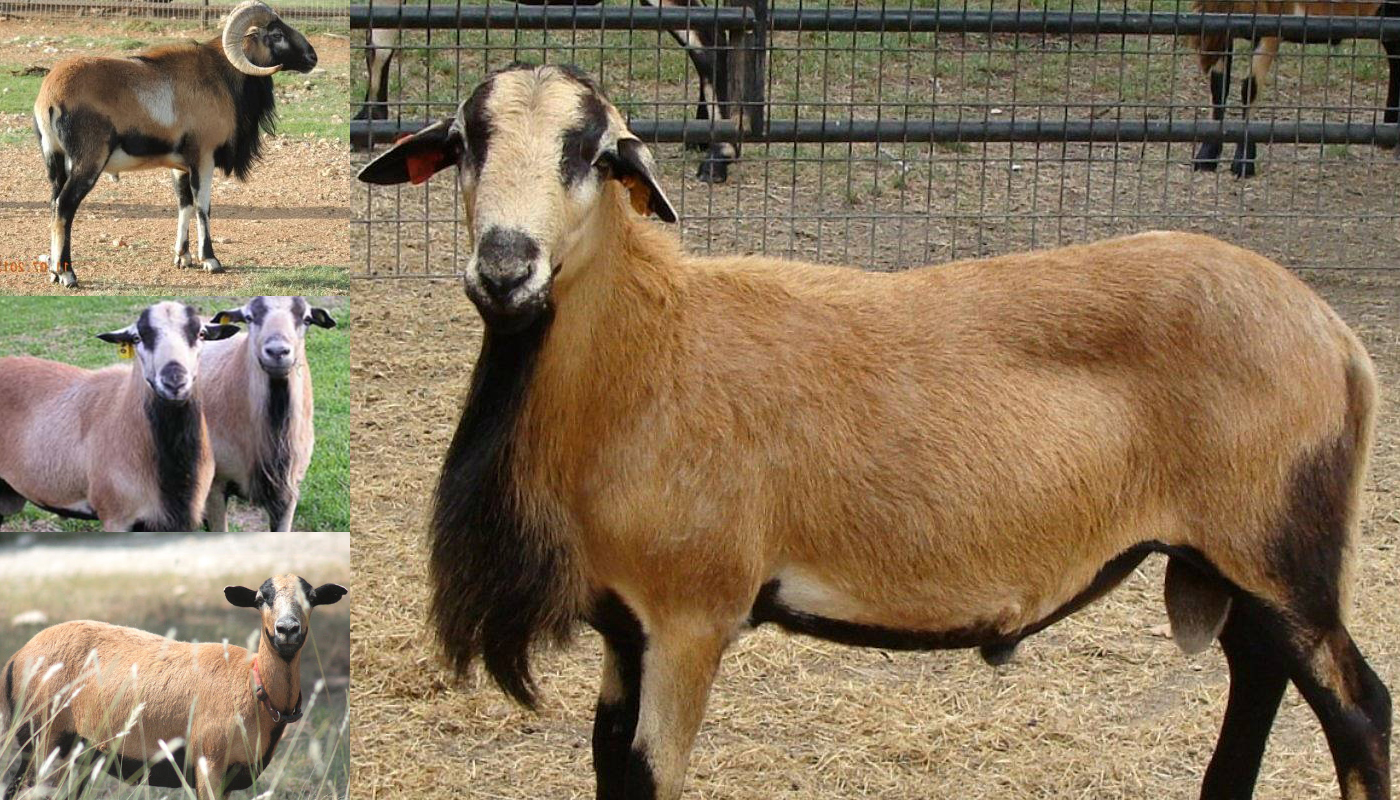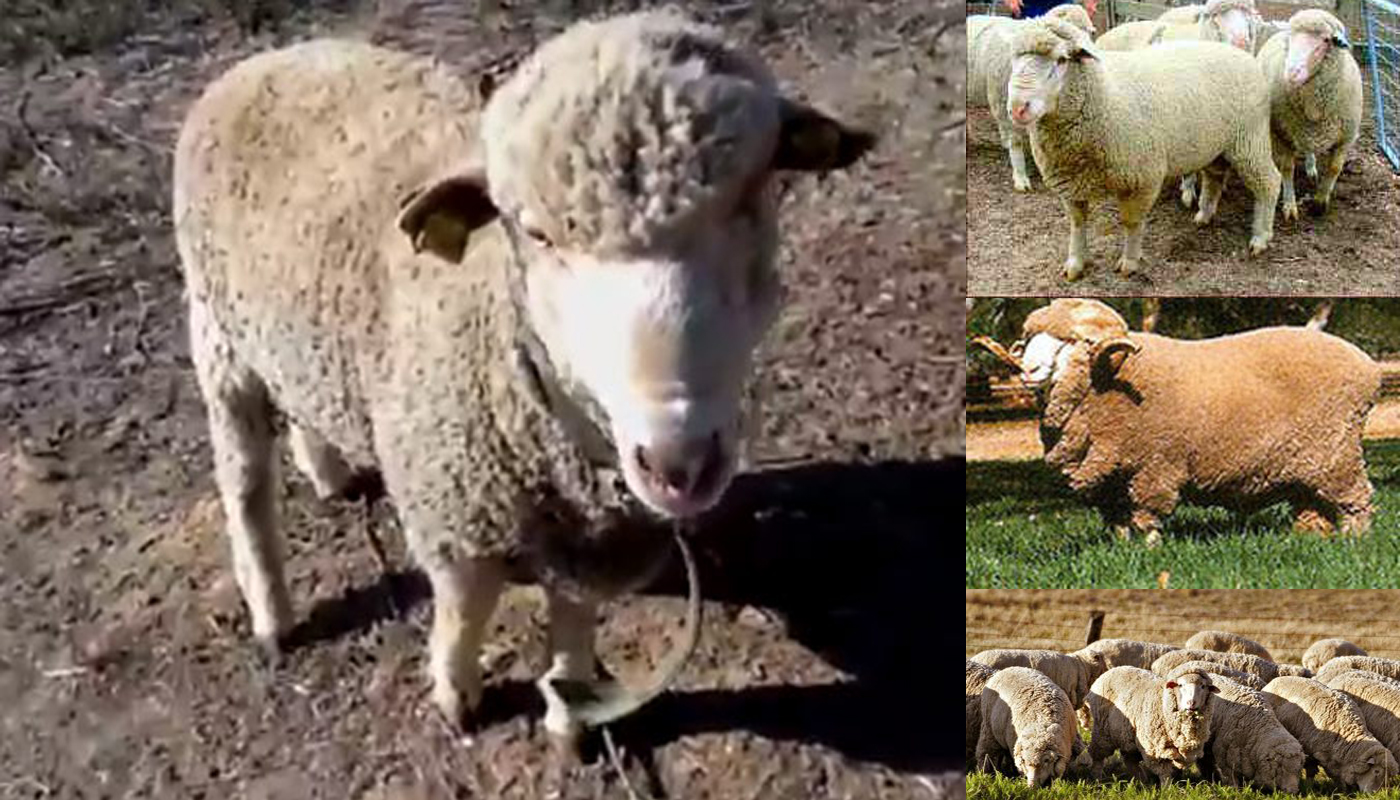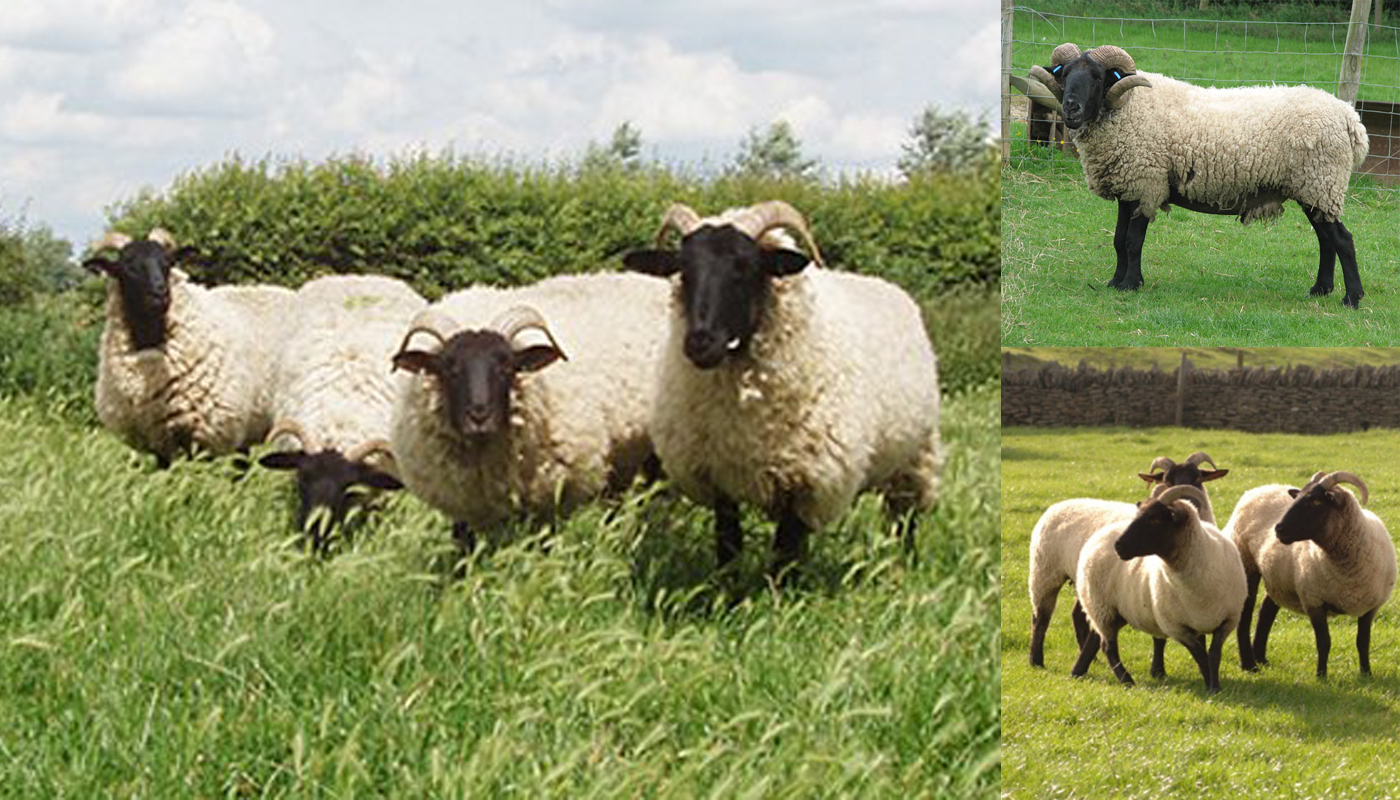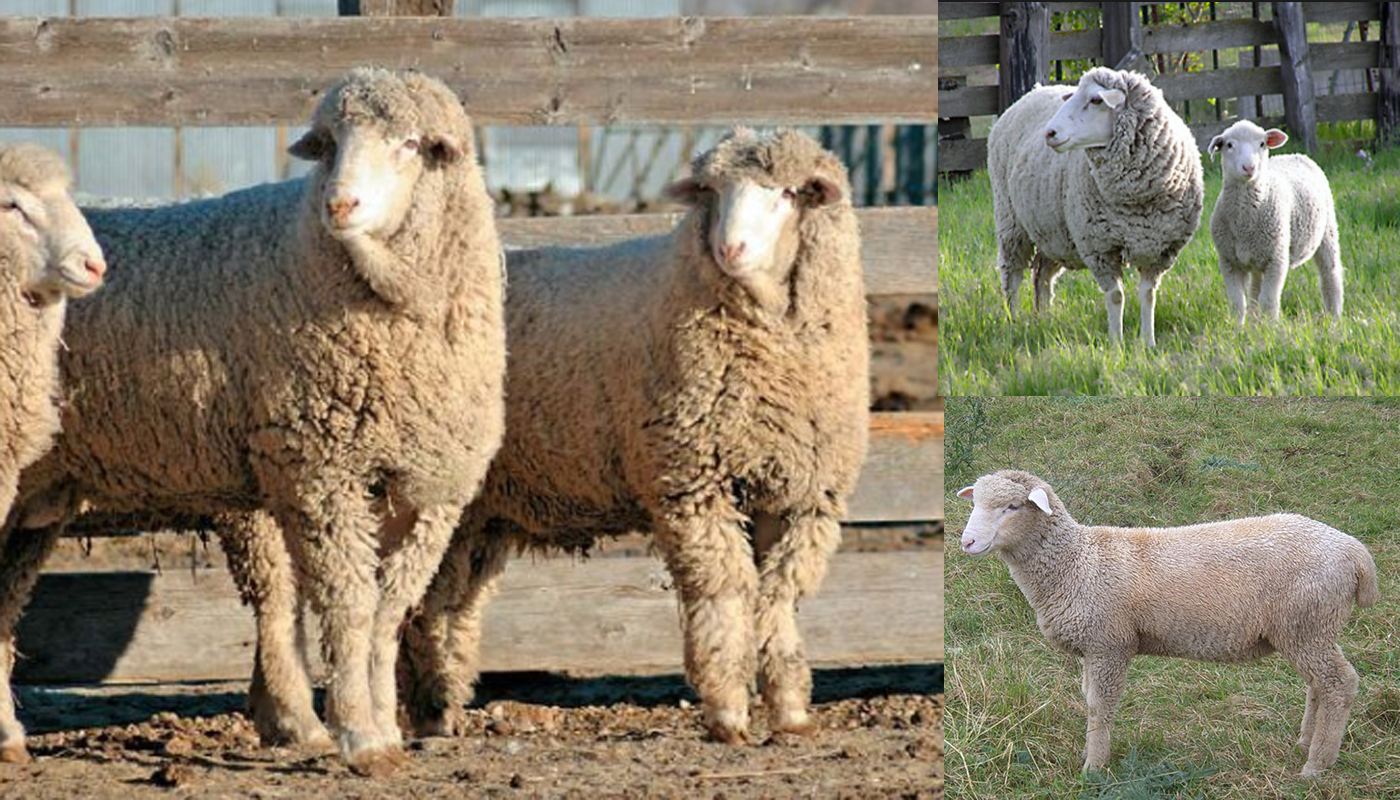
The Southdown sheep is a sheep that originates from the United Kingdom and it is medium sized sheep breed that has a long compact body in relation to the length of their medium length legs.
They are one of the oldest breeds of “down” sheep from the United Kingdom and are prized for their meat but also produce a decent quality and quantity of wool.
SOUTHDOWN SHEEP QUICK PROFILE OVERVIEW |
|
|---|---|
| The Southdown sheep breed is the oldest of the “down” sheep breeds with a consistently good quality in both meat and wool production. They are said to be one of the most important and valued breeds from the United Kingdom. | |
| Country of Origin: | United Kingdom |
| Other Names: | None |
| Breed Size: | Medium to large |
| Main Purpose: | Meat but can also be used for it wool |
| You may Also Like: | 11 Best Sheep Breeds for Meat Production |
| Can be used for | Breed, **LSC, Meat, Wool |
| Temperament: | Docile and easy to handle |
| Ideal Climate: | Heat, Cold, Most climates |
| Conservation Status: |
Listed by the *ALC Status/Rarity: Recovering |
| Health Issues? | No known health issues |
| Good Starter Sheep? | Novice to intermediate sheep farmer/keeper level |
| Sheep Associations: | American South Down Breeders Association and South Down Sheep Society |
| Sheep Clubs: | Please refer to the American South Down Breeders Association and South Down Sheep Society breeders/members directories for more information |
| Note: *ALC stands for American Livestock Conservancy ** LSC stands for Landscape Management – the animal is used for controlling various vegetation growth |
|
PHYSICAL CHARACTERISTICS |
||||||||||||||||||||||||||||||||
|---|---|---|---|---|---|---|---|---|---|---|---|---|---|---|---|---|---|---|---|---|---|---|---|---|---|---|---|---|---|---|---|---|
| The Southdown sheep breed is attractive, alert and has a very balanced appearance. They have a deep chest that is not too wide and well sprung ribs. They have long wide face and medium sized legs that are usually covered with wool and fine soft pink skin. | ||||||||||||||||||||||||||||||||
| Color(s): | White | |||||||||||||||||||||||||||||||
|
||||||||||||||||||||||||||||||||
EWE BREEDING & MILKING INFORMATION |
|
|---|---|
| The ewes breed once a year and mostly produce enough milk to wean their lambs. | |
| Breeding Period/cycle: | Usually lasts 24 to 36 hours |
| Estrous cycle: | Ave. 17 days/13 to 19 days |
| Gestation Period: | Usually, around 150 to 155 days but most gestation is 152 days |
| No. Lambs/Litter: | 1 to 2 (twins) |
| Lactation Period: | Usually, around 150 to 240 day but most are milked for 180 days |
| Milking From: | 4 to 6 weeks after lambing |
| Milk Quality: | Good |
| Milk Ideal for: | Lambs |
| You may Also Like: | 10 Best Sheep Breeds for Milk |
SHEEP MEAT PRODUCTION INFORMATION |
|||||||
|---|---|---|---|---|---|---|---|
| The sheep dress out well and produce a high quality with an excellent carcass. Their meat is flavorsome, rich in color, succulent and tender. | |||||||
| Meat Production: | Yes, Quality: Excellent | ||||||
|
|||||||
| You may Also Like: | 11 Best Sheep Breeds for Meat Production | ||||||
SHEEP WOOL PRODUCTION INFORMATION |
||||||||||||||||
|---|---|---|---|---|---|---|---|---|---|---|---|---|---|---|---|---|
| The Southdown sheep produces a fine fiber that has been used in knitwear for many years. | ||||||||||||||||
| Wool Production? | No, Quality: Fine to medium | |||||||||||||||
| Wool is used to Produce: | Knitted garments, clothes, blankets, etc. | |||||||||||||||
|
||||||||||||||||
| You may Also Like: | 18 Best Wool Producing Sheep Breeds | |||||||||||||||
SHEEP SKIN PRODUCTION INFORMATION |
|||||||
|---|---|---|---|---|---|---|---|
| They are not primarily bred for their sheep skin production. Although their skin is or has at some time been used for the production of some form of sheep skin product such as chamois, etc. | |||||||
| Skin Production? | N/A | ||||||
| Skin is used to Produce: | Kid skin leather products such as shoes, car seats, fine leather coats, gloves, etc. Chamois cloths, leather goods such as seats, shoes and other garments and leather materials such as furniture, etc. |
||||||
|
|||||||
GOOD TO KNOW ABOUT THE ROMNEY SHEEP |
|
|---|---|
| A few more interesting facts to know about the breed | |
| Child-Friendly? | They are very docile but should not be left unattended around unsupervised children. |
| Landscape Management? | They do well in managing the foliage |
| Where to buy them? | Please refer to the American South Down Breeders Association and South Down Sheep Society breeders/members directories for more information |
| General Information: | The Southdown sheep breed belongs to a group of sheep called the “downs” group. They are the smallest of the breeds from this group and also the oldest breed in the group. The Southdown sheep once supplied the United Kingdom with wool, lamb and mutton. |
HISTORY
Around 1341 there was and estimate of nearly 110000 Southdown sheep in Sussex and their wool quality came in second to that only of the Hereford sheep breed.
The breed was standardized around 1780 by John Ellman who realized the breed potential and set out to increase the quality of the breed.
The Southdown sheep breed was found in great numbers in the South Downs near Lewes from around the 19th to the early 20th century. The breed were found in large concentrations on downland farms was for their primary role in maintaining the soil fertility of the area.
The First World War saw the decline of the Southdown sheep breed quite rapidly and by 1922 the Southdown flock sizes had shrunk around 245 registered pedigree flocks.
Along with the ever-popular growing requirement for artificial fertilizer the keeping of the breed for this purpose was no longer a requirement or financially viable.
The Southdown sheep were placed on the Rare Survival Breeds Trust watch list. They are also listed on the American Livestock Conservancy list as “threatened”.
Video
USEFUL LINKS
- United States Lamb Resource Center
- American Sheep Industry Association
- American Sheep Industry Association List of Breed Associations & Standards
- American Milk Sheep Association
- Dairy Sheep Association of North America
- American Wool Council
- Fur Commission USA
- North American Meat Institute
- American Lamb Board
- National Lamb Feeders Association
- American Livestock Conservancy
- Animal Shelter (ASPCA)
- American Veterinary Medical Association
- American Animal Welfare Society
- American Animal Control
- American Animal Husbandry Society
- United States Department of Agriculture
 St. Croix Sheep Breed – Everything You Need to Know
St. Croix Sheep Breed – Everything You Need to Know Barbados Black Belly Sheep Breed – Everything You Need to Know
Barbados Black Belly Sheep Breed – Everything You Need to Know Delaine Merino Sheep Breed – Everything You Need to Know
Delaine Merino Sheep Breed – Everything You Need to Know Shetland Sheep Breed – Everything You Need to Know
Shetland Sheep Breed – Everything You Need to Know Coopworth Sheep Breed – Everything You Need to Know
Coopworth Sheep Breed – Everything You Need to Know Herdwick Sheep Breed – Everything You Need to Know
Herdwick Sheep Breed – Everything You Need to Know Norfolk Horn Sheep Breed – Everything You Need to Know
Norfolk Horn Sheep Breed – Everything You Need to Know Teeswater Sheep Breed – Everything You Need to Know
Teeswater Sheep Breed – Everything You Need to Know Columbia Sheep Breed – Everything You Need to Know
Columbia Sheep Breed – Everything You Need to Know East Friesian Sheep Breed – Everything You Need to Know
East Friesian Sheep Breed – Everything You Need to Know Dorset Horn Sheep Breed – Everything You Need to Know
Dorset Horn Sheep Breed – Everything You Need to Know North Country Cheviot Sheep Breed – Everything You Need to Know
North Country Cheviot Sheep Breed – Everything You Need to Know